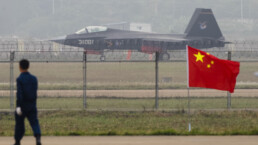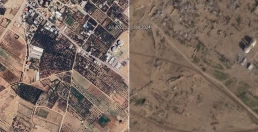Mounting Tensions Over Taiwan create another nuclear flashpoint for the West.
by Michael Klare, Tom Dispatch
Thanks to Vladimir Putin’s recent implicit threat to employ nuclear weapons if the U.S. and its NATO allies continue to arm Ukraine — “This is not a bluff,” he insisted on September 21st — the perils in the Russo-Ukrainian conflict once again hit the headlines. And it’s entirely possible, as ever more powerful U.S. weapons pour into Ukraine and Russian forces suffer yet more defeats, that the Russian president might indeed believe that the season for threats is ending and only the detonation of a nuclear weapon will convince the Western powers to back off. If so, the war in Ukraine could prove historic in the worst sense imaginable — the first conflict since World War II to lead to nuclear devastation.

But hold on! As it happens, Ukraine isn’t the only place on the planet where a nuclear conflagration could erupt in the near future. Sad to say, around the island of Taiwan — where U.S. and Chinese forces are engaging in ever more provocative military maneuvers — there is also an increasing risk that such moves by both sides could lead to nuclear escalation.
While neither American nor Chinese officials have explicitly threatened to use such weaponry, both sides have highlighted possible extreme outcomes there. When Joe Biden last spoke with Xi Jinping by telephone on July 29th, the Chinese president warned him against allowing House Speaker Nancy Pelosi to visit the island (which she nonetheless did, four days later) or offering any further encouragement to “Taiwan independence forces” there. “Those who play with fire will perish by it,” he assured the American president, an ambiguous warning to be sure, but one that nevertheless left open the possible use of nuclear weapons.
As if to underscore that point, on September 4th, the day after Pelosi met with senior Taiwanese officials in Taipei, China fired 11 Dongfeng-15 (DF-15) ballistic missiles into the waters around that island. Many Western observers believe that the barrage was meant as a demonstration of Beijing’s ability to attack any U.S. naval vessels that might come to Taiwan’s aid in the event of a Chinese blockade or invasion of the island. And the DF-15, with a range of 600 miles, is believed capable of delivering not only a conventional payload, but also a nuclear one.
Recent Posts
What To Do When You See ICE In Your Neighborhood
July 14, 2025
Take Action Now How can you deter the Trump administration’s immigrant deportation machine when it pops up in your community? Follow these…
ICE Campaign Of Violence Will Lead To More Deaths
July 14, 2025
Take Action Now Jaime Alanis’s death shows the horrific consequences of a secret police force behaving with utter impunity.By Natasha Lennard, The…
Hague Group: “Concrete Measures” or Sack of Cement? Will It Move to Sanctions, Peace Force and Ensuring Aid to Gaza?
July 13, 2025
Take Action Now Will the meeting in Colombia be a coalescence of global opinion driving states to just action — or just more rhetoric from various…
Why Are Democratic Lawmakers Still Meeting With Netanyahu?
July 12, 2025
Take Action Now Pictures show Democrats like Chuck Schumer standing next to Netanyahu, smiling.By Sharon Zhang, Truthout A bipartisan group of…




